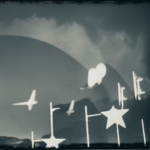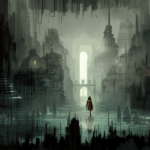One-line Summary:
“The Little Sister” is a gripping detective novel that follows private investigator Philip Marlowe as he navigates the seedy underbelly of 1940s Los Angeles to solve a complex case involving a missing person and a web of deceit.
Introduction:
“The Little Sister” by Raymond Chandler is a classic detective novel that takes readers on a thrilling journey through the dark and corrupt streets of 1940s Los Angeles. The story follows the renowned private investigator Philip Marlowe as he is hired to find a missing girl, Orfamay Quest, who has come to the city in search of her brother. As Marlowe delves deeper into the case, he uncovers a tangled web of deception, blackmail, and murder. With his sharp wit, keen observations, and relentless determination, Marlowe navigates the treacherous world of Hollywood, encountering a cast of intriguing characters along the way.
The Search for Orfamay Quest:
Marlowe’s investigation begins when Orfamay Quest walks into his office, desperate to find her missing brother, Orrin. She believes he has fallen into trouble in Los Angeles and wants Marlowe to locate him. Intrigued by the case, Marlowe agrees to take it on, even though he suspects Orfamay is hiding something. As he digs deeper, Marlowe discovers that Orrin is involved with a shady nightclub owner named Louie, who has connections to the criminal underworld. Marlowe’s search for Orrin takes him from the glamorous world of Hollywood to the gritty streets of downtown LA, where he encounters corrupt cops, femme fatales, and dangerous gangsters.
A Web of Deceit:
As Marlowe delves deeper into the case, he uncovers a complex web of deceit and betrayal. He discovers that Orrin has been involved in a blackmail scheme targeting a wealthy family, the Slocums. Marlowe suspects that the missing girl’s quest to find her brother is not as innocent as it seems. The investigation takes a dark turn when Marlowe stumbles upon a murder, leading him to believe that Orrin’s disappearance may be connected to a larger conspiracy. As he follows the trail of clues, Marlowe must navigate the treacherous world of Hollywood, where everyone has something to hide.
The Dark Side of Hollywood:
“The Little Sister” paints a vivid picture of the dark side of Hollywood during the 1940s. Chandler’s atmospheric descriptions bring the city to life, from the glitz and glamour of the movie studios to the seedy bars and back alleys. Through Marlowe’s eyes, readers are exposed to the corruption, greed, and moral decay that lurk beneath the surface of the city of dreams. The novel explores themes of disillusionment, the loss of innocence, and the destructive nature of the pursuit of fame and fortune.
Key Takeaways:
- Appearances can be deceiving, and everyone has something to hide.
- The pursuit of wealth and fame can lead to moral decay and corruption.
- The dark underbelly of society often hides behind a glamorous façade.
“I needed a drink, I needed a lot of life insurance, I needed a vacation, I needed a home in the country. What I had was a coat, a hat, and a gun. I put them on and went out of the room.”
– Raymond Chandler, The Little Sister
In conclusion, “The Little Sister” is a gripping detective novel that takes readers on a thrilling journey through the corrupt and dangerous streets of 1940s Los Angeles. Raymond Chandler’s masterful storytelling and vivid descriptions bring the city and its characters to life, while Philip Marlowe’s relentless pursuit of the truth keeps readers on the edge of their seats. This classic novel explores themes of deception, corruption, and the dark side of the pursuit of fame and fortune.












